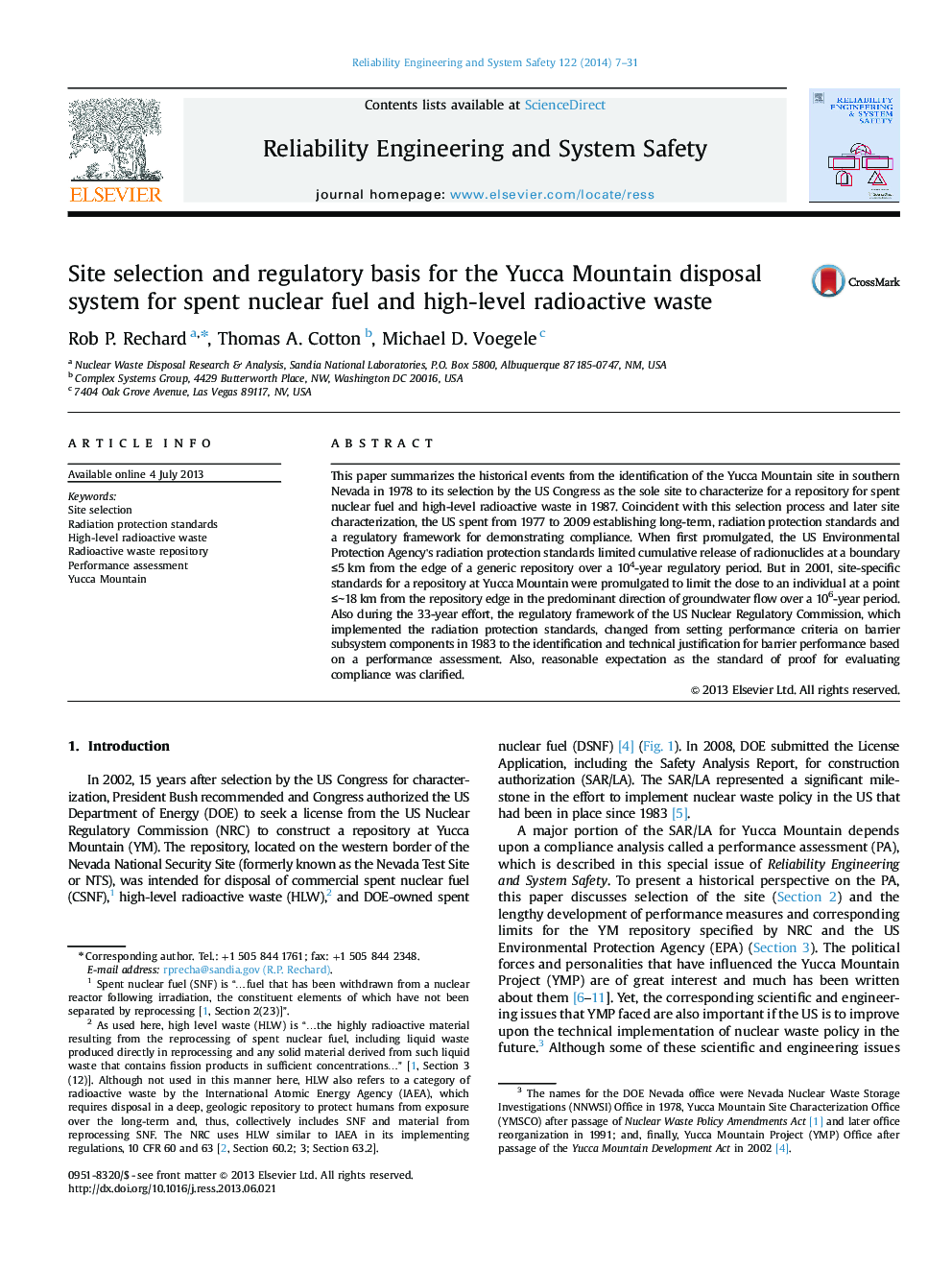| کد مقاله | کد نشریه | سال انتشار | مقاله انگلیسی | نسخه تمام متن |
|---|---|---|---|---|
| 805594 | 1468248 | 2014 | 25 صفحه PDF | دانلود رایگان |
• The interplay between developing policy, selecting a site, and developing safety criteria is described.
• The lengthy interactive process necessary to understand technical and social-political uncertainty and adjust policy is described.
• Historical events associated with the identification of Yucca Mountain and its selection by Congress for characterization in 1987 are described.
• Progression of selection of a standard for the health indicator, treatment of human intrusion, is described.
• Progression from subsystem requirements to identification of barriers important to isolation in regulations is described.
This paper summarizes the historical events from the identification of the Yucca Mountain site in southern Nevada in 1978 to its selection by the US Congress as the sole site to characterize for a repository for spent nuclear fuel and high-level radioactive waste in 1987. Coincident with this selection process and later site characterization, the US spent from 1977 to 2009 establishing long-term, radiation protection standards and a regulatory framework for demonstrating compliance. When first promulgated, the US Environmental Protection Agency's radiation protection standards limited cumulative release of radionuclides at a boundary ≤5 km from the edge of a generic repository over a 104-year regulatory period. But in 2001, site-specific standards for a repository at Yucca Mountain were promulgated to limit the dose to an individual at a point ≤∼18 km from the repository edge in the predominant direction of groundwater flow over a 106-year period. Also during the 33-year effort, the regulatory framework of the US Nuclear Regulatory Commission, which implemented the radiation protection standards, changed from setting performance criteria on barrier subsystem components in 1983 to the identification and technical justification for barrier performance based on a performance assessment. Also, reasonable expectation as the standard of proof for evaluating compliance was clarified.
Journal: Reliability Engineering & System Safety - Volume 122, February 2014, Pages 7–31
